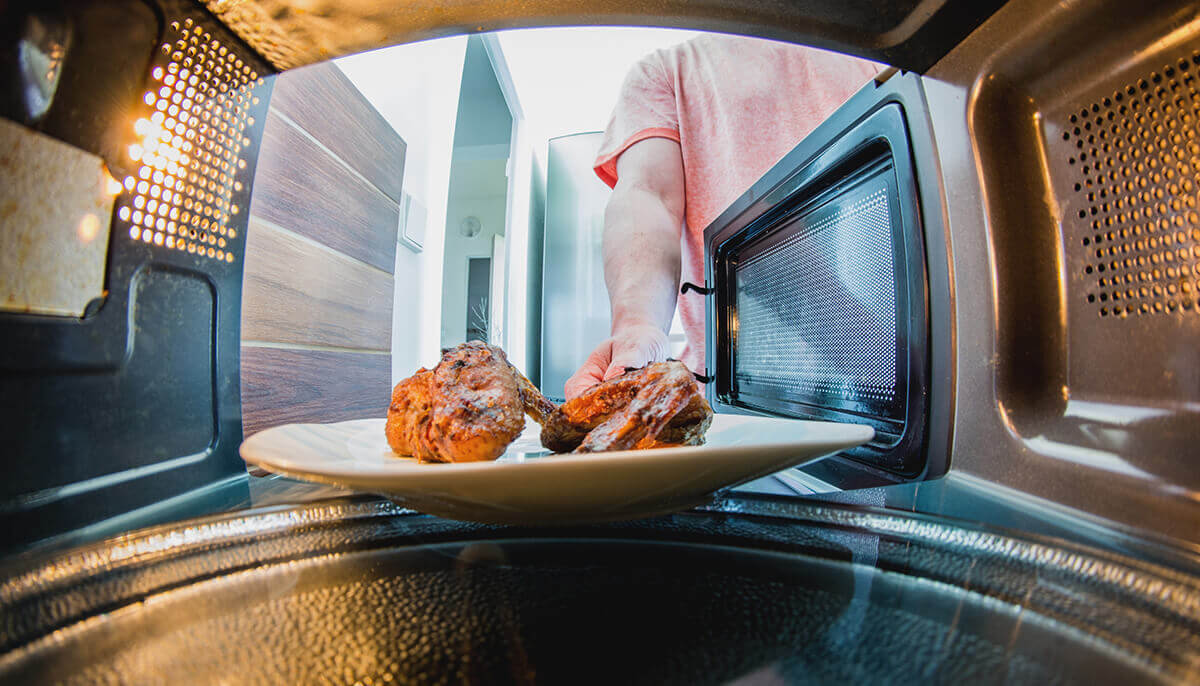Tips to maximize personal cooking styles and create healthier meals at home.

Does walking into the kitchen at mealtime inspire a feeling of love or dread? Whether home-cooked or takeout meals are preferred, the basics of healthy eating are the same. Including more nutrient-rich foods at mealtimes means a more balanced diet overall.
Identified below are four general cooking personalities that embody common food attitudes and cooking styles, with tips on how to make small improvements that will lead to healthier eating patterns.
Cooking mantra: I’d rather eat out!
Preferred ingredients: Not many.
Cooking style: Expert at reheating meals, ordering takeout and dining out. Prepackaged is a go-to.
The professional diner prefers to eat out or heat already
prepared foods. The least amount of effort is best, whether due to a busy schedule or not enjoying cooking. When in the kitchen, the professional diner is often hungry and without a plan for food.
Tasty, healthy meals are possible with limited time in the kitchen. In lieu of takeout or fast food meals, which tend to be high in calories, opt for a diversity of healthier prepackaged entrees or rotisserie chicken coupled with a salad kit from the
grocery store. Additionally, keeping versatile foods with a longer shelf life like cheese, yogurt, frozen vegetables and fruit, canned tuna or chicken, eggs, peanut butter, tortillas and canned beans ensures easy-to-use ingredients are always on hand
to prepare a quick and easy meal. This approach can work equally well for big families or people living alone.
Try these simple yet satisfying meals for a nutritious, home-cooked dining experience:
Cooking mantra: Cooking is easier with a little help.
Preferred ingredients: Mostly prepackaged, frozen and canned.
Cooking style: More heating and assembling ingredients than cooking.
The ideal recipe for the semi-homemade cook requires minimal chopping and relies on shortcuts such as bagged greens or precut veggies to make meal preparation quick and simple. The semi-homemade cook values healthy meals and likes to focus on fresh ingredients when possible but has limited time and/or experience to create a meal completely from scratch.
Plan meals up to one week in advance using theme days such as Thursday pasta night or Sunday night soup and salad. Schedule one meal each week to be takeout or dine out to provide a well-deserved break from cooking. A slow cooker is a great tool for preparing healthy meals that require minimal effort and quick mealtimes once the family gets home.
Here are a few more ideas to make meal preparation faster:
Cooking mantra: Fresh is best.
Preferred ingredients: Fresh and seasonal ingredients when possible; selective with prepackaged foods.
Cooking style: Happy to prepare elaborate dishes, but quick meals are typical.
The purist values healthy, good-tasting foods and prefers streamlined recipes that save time while still using fresh ingredients as much as possible. Making recipes from scratch is enjoyable, but often there isn’t enough time. During the week, simpler recipes with fewer ingredients are key to meal preparation, while the purist reserves more complex meals for weekends.
Take advantage of extra time on the weekends by preparing larger quantities and freezing some for later. For weeknight meals, stick with basics such as broiled or roasted meats or fish, steamed or roasted vegetables, salads and fresh fruit desserts.
In addition to doubling meals, try these tips:
Cooking mantra: I love to cook and experiment with flavors!
Preferred ingredients: Fresh, seasonal ingredients; exotic foods; no flavor is off the table.
Cooking style: Likes to cook and buys fresh ingredients regularly.
For the gourmet personality, good food is important. The foodie likely has a discriminating palate, prepares high-quality meals that require a time commitment and is willing to make new recipes. The foodie is comfortable changing a recipe to adapt it to personal preference.
Because creating food is a pleasurable activity, finding recipes that match specific interests is important. Identify the types of cooking that are most enjoyable and build on those. If interested in perfecting a new technique, try making homemade bread, stir-frying or making sauces.
Try these tips to build on cooking skills:
It is possible to have a healthy diet with any cooking style. An eating pattern that includes whole, minimally processed foods from all the food groups will provide nutrients that are essential for overall health and may reduce the risk of chronic diseases. Whether microwaving a bean burrito or cooking a three-course meal from scratch, there are simple ways to enhance the nutrient content of meals that can go a long way toward improving overall health and wellness.
Maria Frye, RDN, provides tips to save money on groceries without compromising quality or nutrition.
Watch hereLearn how food processing plays an important role in food security and food safety in this blog.